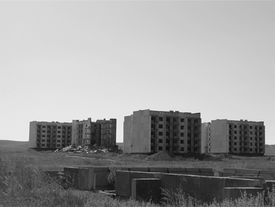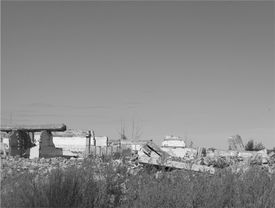12. Neighbours and their Ruins: Remembering Foreign Presences in Mongolia
| © Grégory Delaplace, CC BY | DOI: 10.11647/OBP.0026.12 |
This chapter addresses Mongolian people’s relationship with their two gigantic neighbours: the Federation of Russia and the People’s Republic of China, on the basis of two ethnographic situations. The first one, which will be the point of departure and form the core of this discussion, concerns the discourses and practices surrounding the abandoned Russian mining town of Mardai. The second one deals with a rumour regarding Chinese ghosts, reported to haunt the places where they used to live in Mongolia. I will argue that these two sets of data reveal two very different ways in which Mongols might relate to their neighbours – two opposite technologies of cross-border relationship (see Introduction).
In October 1989, following the policy of “transparency” (il tod) initiated by Jambyn Batmönh after the Russian Glasnost’, the Mongolian government revealed the existence of a secret town, located in the middle of the far-eastern province of Dornod, next to the borders with Russia and China (Sanders 1989: 64). The town was called Mardai: it had been established in 1981 in the vicinity of an uranium mine exploited by the Russians, as part of a secret agreement with the Mongolian government. Until its gradual opening after the end of the communist regime, the town had been closed to the Mongolian population, and was exclusively inhabited by Soviet nationals coming from all over the USSR.1 According to memories of people who knew the city at that time, “Russian” (Oros) workers worked in the mines and tended the shops, “Russian” teachers taught their children in a school and a kindergarten, and “Russian” policemen patrolled the town. It is estimated that about 50,000 people lived in this secret enclave of the Soviet Union, working in Mongolia, and yet living in a strictly “Russian” environment, completely cut off from the local population (ibid.).
The uranium extracted in Mardai was shipped directly to a processing plant in Krasnokamensk, some 500 km away on the other side of the border (Nuclear Energy Agency 1998: 246), using a railway line that did not feature on any map. Mardai was therefore, as stressed by Uradyn Bulag, who visited the city in the beginning of the 1990s, a “symbol of Russian colonial exploitation of Mongolia” (1998: 23). It was the concrete proof that Mongolia, although an independent state, was not completely sovereign within its own borders; that parts of its territory could be closed off to its own population and exploited by Russians, for Russia’s exclusive profit.
However, the revelation of the existence of this secret town, equipped with state-of-the-art Russian infrastructure, and supplied with Russian goods, seems to have elicited less resentment than excitement among the local population. This in spite of the fact that the city and shops remained closed to most, with the occasional exception of Party officials. Many Mongols, however, came to settle around the city, to live off small trade with the Russian population or to try and acquire re-sellable pieces of the high quality infrastructure. Mongol people who visited Mardai at that time recall its shops selling clothes of the latest Moscow fashion and other items that were not even available in Ulaanbaatar; its orchard providing fruits in the middle of the desert; its swimming pool; and its fully equipped sports hall – all of which were on display and yet forbidden to them.
In 1995, the Russian government finally decided to close down the mine, and three years later the decision was made to repatriate all the workers (Nuclear Energy Agency 1998: 246). Still vivid in people’s minds today is the image of a city emptied of its entire population almost overnight and of Mongol settlers suddenly left alone around deserted buildings. The 1990s were a moment of economic hardship in Mongolia, and Chinese traders at the border, were buying iron at a good price. So very soon after the city was vacated, a process began of methodically removing all metallic structures within the city: lamp posts and all kinds of railings were removed, but also the frameworks of buildings were stripped bare. Before long the city was turned into mere standing ruins.
I had the opportunity to visit the city during the summer of 2009, and to see for myself the ruins of what is still remembered as a beautiful town. More importantly, I met a man who had known it as it used to be, and who had been there through the whole process of bringing it down. Later, I met several other people who had visited the town at some point, or who expressed their feelings about its present state. Here, I propose to draw on these memories of Mardai to retrace the uncommon history of this town and in particular its destruction by the Mongol population. I wish to argue that the stripping of the iron, and the levelling of the city, should not be seen as an aggressive gesture directed at the symbol of a former colonial power. On the contrary, the destruction of the city seems paradoxically to go hand in hand with enduring feelings of respect towards Russian presence and enterprise in Mongolia – even when projects were undertaken behind the back of the local population, within the framework of an asymmetrical, truly colonial, form of economic cooperation.
On the other hand, these respectful feelings stand in sharp contrast to the negative judgments about Chinese people with whom iron is traded, as illustrated by the rumours about Chinese ghosts currently in circulation in Mongolia. People have been reporting apparitions of souls of colonial merchants, which are supposed to have remained attached to the wealth they accumulated during their stay in Mongolia. Contrasting memories of Mardai and stories of Chinese ghosts, I wish to show in this chapter that memory is used as a site to manage cross-border relationships in Mongolia.
This argument could be seen simply as another illustration of the political implications of collective memory – a topic on which references are just too numerous to be even listed here – and in a way the ambition of this chapter is no larger than that. To be more specific, however, the argument made here could claim to pursue the same kind of intellectual project as that outlined by Janet Carsten in her introduction to the collective volume Ghosts of Memory, by giving a further illustration of “the subtle and complex interconnections among everyday forms of relatedness in the present, memories of the past, and the wider political contexts in which they occur” (2007: 1).
Drawing on three bodies of literature – on memory and history, on the “politics of memory” in relation to ethnic or nationalistic claims, and on kinship as relatedness – Carsten sets about to study “how, cumulatively and over time, small everyday processes of relatedness – such as narrating stories of past kinship, tracing family histories, constituting small ceremonies of commemorations […] – have a large-scale political import” (ibid.: 4). The book is mostly concerned with how the haunting memories of disrupted relations and “critical events” might define patterns of relatedness in the present – a point perfectly illustrated in a Mongolian context by Rebecca Empson (2007), who shows with her contribution in the same volume how memories of exiled, deceased, or simply distanced relatives among the Buryat Mongols are embodied in material objects within the domestic space, a relationship with them being thus sustained in spite of their absence.
The argument presented here also envisages the connection between memory, patterns of relations, and their political context. It does so with this slight difference, however, that it takes relationship with foreigners, rather than kinship, as its main object of study. Adopting a technological approach to border studies (see introduction), this chapter explores the “subtle and complex interconnections” between collective memories, relations with foreign neighbours (the closest strangers, the furthest neighbours), as well as the historical and political context in which they are imagined to take place. In this perspective, memories of Russian presence and Chinese ghosts springing up from the past could be seen as elements of a border technology that, although not located right in the border zone, is attached to particular places on Mongolian territory, and defines contrasted styles of relationships with immediate neighbours. I will argue that a crucial role is played here by the materiality of foreign presence in Mongolia: while “Russians” (Oros) are praised for leaving visible, even conspicuous traces of their presence, “Chinese people” (Hyatad, derogatory Hujaa) are despised for burying everything underground.
A brief history of Mardai
Uranium exploration started after World War II in Mongolia, when several uranium deposits were found between 1945 and 1960. From 1970 to 1990, a bilateral agreement was signed, allowing the Ministry of Geology of the USSR to lead a geological reconnaissance expedition in Mongolia to inventory its mineral resources. Seventy percent of Mongolian territory was surveyed, and four metallogenetic provinces were identified, one of which was the Mongol Priargun in the eastern part of the country (Nuclear Energy Agency 1998: 240). In 1977, an uranium ore deposit was found near the Mardai river. A secret agreement was subsequently signed, allowing the Soviet government to proceed with its exploitation on Mongolian territory (Mays 1998).
In 1981, a mine was established in Mardai, together with all supporting infrastructure: it was called “Erdes” and was created as a “sub-combine” (subkombinat) of Priargunsky Mining and Chemical Works, itself a division of the Soviet Ministry of Atomic Energy. The main combine (kombinat), of which Erdes was a sub-section, was located in Krasnokamensk (ibid.). The uranium extracted in Mardai was shipped directly to Krasnokamensk, where it was processed. To this end, a railway line was built that linked the two mining towns across the border. None of these, however, neither the railway nor the town, appeared on maps at that time and until quite recently.
Uranium production began in 1988, ironically less than a year before the existence of Mardai was made public. However, the extraction continued until 1995, providing around 100,000 tons of ore a year, amounting to approximately 100 tons of uranium after refining (Nuclear Energy Agency 1998: 240).
By that date, the settlement had gradually developed into a fully-fledged Russian town (Fig. 1), populated with workers coming from all over the Soviet Union, including from the nearby Buryat Autonomous Republic. Interestingly, the secrecy of Mardai and its very restrictive access policy created a strict division within the “Buryat” ethnic category: Buryats from the Buryat Autonomous Soviet Socialist Republic, who usually spoke only Russian, were entitled to live in the town from the outset, fully benefiting from its goods, while Buryats living in Dornod province around Mardai, who often spoke both Mongolian and Russian, were excluded.
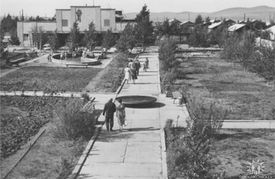
Fig. 1 Mardai city centre, probably 1980s. Photograph posted by Wowabruch on Panoramio, ID: 29464337
The town was obviously far better equipped than any Mongolian city of the time. Like any other Soviet town the streets were lined with trees and a social club was located right in the city centre (Fig. 2). Former residents hailing from the Soviet Union also remember the impressive array of goods sold in shops, some of which were not even available back in their hometown (http://www.maxpey.narod.ru/mongol.html). There was also a kindergarten, a school complete with all facilities, a football and even a hockey ground (Fig. 3), where championships were organised in summer and in winter respectively (ibid.). It is reported that at some point a cantilevered wheel was even erected, on which the city and its surroundings could be observed from above (Shimamura, personal communication).
Fig. 2 Mardai’s “club” (klub), probably 1980s. Photograph posted by Wowabruch on Panoramio, ID: 29463808
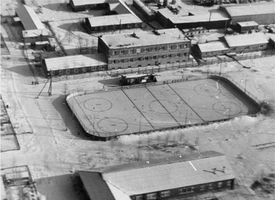
Fig. 3 Mardai’s hockey ground, probably 1980s. Photograph posted by Wowabruch on Panoramio, ID: 29464363
From the beginning of the 1990s onwards, the Mongol population – often Buryat families who used to live in nearby towns such as Dashbalbar in the north – began to settle around the city. According to former residents, by 1995, when the uranium production stopped, about 200 households lived in a separate district. After three years of uncertainty concerning the future of the mine and various attempts to restart production, Russian workers were given leave in 1998, and returned home.
Once emptied of its inhabitants, the city became available for a completely different purpose: as the iron was removed by Mongols settlers and sold at the border to Chinese wholesale dealers, it became a stockpile of saleable parts. Ironically, the mining town itself suddenly transformed into a mine. Everything was removed: all metallic items of course, but also the iron components in buildings, leaving them standing without structure, as well as the metallic framework of the roads (Figs. 4 and 5). Pipes were extracted from the ground for the lead they contained and wires were pulled out for their copper.

Fig. 4 General view of Mardai from the central square (photo: S. Batchimeg 2009)
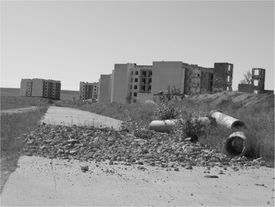
Fig. 5 Ruined buildings and roads (photo: S. Batchimeg, 2009)
After the Russian population left, only a few households specialised in iron removal remained in Mardai, occupying more central places in the town, while the rest of the households moved out. Today, a dozen households still live there, often on a seasonal basis, and continue collecting iron to sell it across the Chinese border (Figs. 6 and 7). According to the people interviewed on site, they trade the iron they collect to brokers who then resell it to Chinese buyers, making quite significant profits in the process. Rumour has it that some very wealthy people made their fortune this way at the end of the 1990s. The Mongolian state itself took on some scraping of its own, notably availing itself of railway tracks around Mardai to be reused for its own network.

Fig. 6 Household living next to the central square, living of iron trade (photo: S. Batchimeg, 2009)
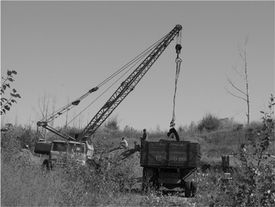
Fig. 7 Iron loaded on a truck (photo: S. Batchimeg, 2009)
Recently Mardai has again made the news when plans for re-exploitation by a new company were made public (Urantogos 2010). The firm, Central Asian Uranium Company, is jointly owned by the former Russian owner (Priargunsky Mining and Chemical Works), the Mongolian government (through a small company called Erdene Mongol LLC), and a Canadian company called WM Mining International Ltd – which later sold its rights to World Wide Minerals Ltd, also known as Khan (Mays 1998; Wu 1999: 154). Newspapers have voiced concerns regarding the status of these mining licenses obtained through opaque agreements between the Mongolian and Soviet governments. Some journalists have called on their leaders not to make the same mistakes and let foreign agents exploit Mongolian resources unilaterally. Locals generally assume that, should uranium be exploited again, Mardai will be rebuilt. And the irony that Russians themselves might take part in this rebuilding was not lost on the people I was able to talk to – I will return to this point.
Memories of Mardai – a forbidden island of modernity
Mongolian people who have known Mardai before its destruction remember it with great excitement, almost enthusiasm. This excitement, in part, comes from the fact that the city had been inaccessible for so long, and that it was brought down to ruins as soon as it became open to the public. This has allowed Mardai to remain some kind of a legend, mostly known by hearsay and clad with the prestige of lost Soviet grandeur; people’s memories, intertwined with fantasies, single out Mardai as an archetype of Socialist modernity.
“How do people go about remembering something they have never seen?” asked Morten Pedersen (2010: 245) upon considering narratives of Buddhist temples in Mongolia’s northern Darhad region. Following Lars Højer (2009), Pedersen emphasised “the peculiar enhancement of occult agency that sometimes grows out of having incurred a religious loss” (2010: 246). He described how the leveling of almost every monastery in the Darhad region spurred people’s imagination about the extent and power of Darhad Buddhism. Focusing on the fate of one single artefact, a golden Tara statue extracted from a monastery before it was destroyed during the purges of the 1930s, Pedersen described the legends that flourished in relation to it. The statue, “a condensation of Darhad Buddhism” is now the material anchor point of a “virtual temple” that people carry in their mind (ibid.: 254).
As we will see, the ruins of Mardai could be said to achieve the same kind of effect: a condensation of Socialist ideology and Soviet way of life, they form the material basis of a virtual temple to modernity. What follows confirms what emerges from Pedersen’s material, and what has been proposed by anthropologists working on mnemonic techniques (e.g. Severi 2007): it is not so much absence that stimulates recollection as the salience2 of the last remaining item. The last remnant spurs imagination and memory, irresistibly filling the void and conjuring up an invisible framework within which the isolated vestige starts making sense again.
When I went to visit Mardai on a day trip in summer 2009, I was lucky enough to meet Tögsöö. Now in his thirties, he was a teenager when the town partially opened in the beginning of the 1990s. He often visited his brother, who had settled there with his family, and worked with him during the summer in small jobs related to the Russian population of the town (selling milk to them, for example). After 1998, when the Russians left, he took an active part in the iron trade.
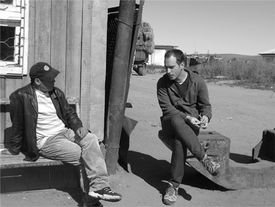
Fig. 8 Chatting with Tögsöö on the central square (S. Batchimeg, 2009)
Tögsöö remembers Mardai with great emotion, notwithstanding the fact that he himself took part in the destruction of its buildings. After a brief conversation on what used to be the central square (Fig. 8) and serves now as an iron trading market, he took us on a tour around the city. His memories brought the city back to life. Showing us the high-rises where workers were accommodated (Fig. 9), he recalled the daily shuttle bus service that took them to work.3 Behind these high-rises, Tögsöö pointed out the kindergarten, which was several floors high (Fig. 10); parts of the flowered wallpaper were still visible on the walls in the ruined buildings (Fig. 11). A little further, blue tiles still covering a half-destroyed wall testified to the presence of a swimming pool only a few years earlier – something hard to believe in the middle of the arid Mongolian steppe (Fig. 12). By pointing out details that revealed what was before, Tögsöö transfigured the ruins, helping us picture the lives of people who had lived there, and appreciate how impressive these infrastructures must have appeared in the middle of the plain. At some distance from the town, Tögsöö pointed out a space that looked empty, explaining that it had been the location of a large airfield capable of accommodating planes that would not be able to land in the capital city Ulaanbaatar’s airport today. Now it was nothing but dust, barely distinguishable from the rest of the steppe. What was striking in Tögsöö’s memories was their precision, and the obvious fact that he cultivated them. These ruins were associated with very vivid recollections of the past, which he let out for us eagerly, almost proudly, for several hours. Throughout our visit to the town, he celebrated it as an island of modernity, unsurpassed in the richness of its infrastructures, even by present-day Ulaanbaatar.
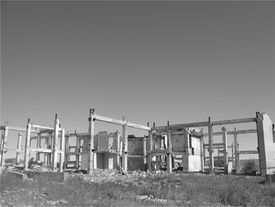
Fig. 10 Ruins of the kindergarten (photo: S. Batchimeg, 2009)

Fig. 11 Detail of the wallpaper still covering the wall of the kindergarten (photo: S. Batchimeg, 2009)
Fig. 12 Ruins of the swimming pool, parts of the tiled walls are still visible (photo: S. Batchimeg, 2009)
It is not unusual to find among the Mongolian population today such expressions of nostalgia for the communist period in general and for Russian presence in particular.4 However, Mardai was not really remembered with nostalgia by people I interviewed. Nostalgia is a feeling for something which has been lost, and Mardai was never really Mongolian: until the end, indeed until its destruction, Mardai was a Russian town, whose wonders were strictly reserved to Russian usage – with the exception, as already mentioned, of Party leaders. Moreover, Mardai was not only associated with modernity, but also with the danger of uranium: rumours still circulate today about livestock born with malformations because of contaminated grass. Also present in people’s mind was the more immediate danger of being shot if one ventured too close to the city: as Uradyn Bulag reported (1998: 23), “no bird could fly over Mardai”. Therefore, the feeling associated with Mardai today is less nostalgia, as other traces of Russian occupation often inspire, than fear, or excitement mingled with fear, that is awe.
As an area restricted to Russian population located far behind the borderline, Mardai could be seen as some kind of a proxy for the border with the Soviet Union, a testimony to the fact that the border is actually more of a frontier area than a line (see Billé, this volume). However, it should be noted that Mardai was far less accessible to Mongols at the time than the Soviet Union itself: whereas Mongolian students would go to universities in Ulan-Ude, Moscow or Saint-Petersburg, “not even a [Mongolian?] bird” could fly over Mardai, although it was located on Mongolian ground. Mardai was not so much a proxy for the Russian border as a super-border, a territory of exception, to which access was not regulated according to the usual rules. This, perhaps, contributed in making Mardai even more awe-inspiring than the Soviet Union itself: Mardai is remembered as Socialism itself in a condensed form,5 closer to Mongolia than the Soviet Union ever was, and yet more closed to the Mongolian population than the Soviet Union actually was.
Memories of Mardai – “it has become like Chechnya”
Strong feelings of nostalgia, however, are still felt today by the Russian people6 who used to live there, some of them for over fifteen years, and who had to leave almost overnight. It was reported that Russian inhabitants were very reluctant to leave the city: Tögsöö assumed that they were easy prey to the “Russian Mafia” back in their hometowns. Coming back after fifteen years of comfortable salary abroad, they were not only deemed rich, they were also quite vulnerable.
The Internet, through such media as picture sharing and mapping software (like Google Earth and Panoramio), provides us with testimonies from former inhabitants, who post pictures and comment on each other’s recollections. Pictures of the central square, of the social club, and of the school, have been commented on with great emotion by former residents evoking their years spent as children or workers in the town (Fig. 13):
“– Ramon: My beloved school!
– Ser. Terexov: As for me I have spent the most refined moments under the building of this school. I’d like to exchange photos of this village and its surroundings. My address is […]
– Elena: The best school ever. How it hurts to see what remains, I wish everything could be there again… So sad…”7

Fig. 13 Mardai’s School n° 17 – picture posted by Ramon on Panoramio, ID: 14413674
This nostalgia might also turn into deep sorrow when former residents come back to the town and realise what it has become. Tögsöö told me the story of a Buryat foreman who shed tears when he returned to visit only one year after he left, in the autumn of 1999. Tögsöö was there, and he remembers the old man lamenting: “it has become like Chechnya!” as if the city had been destroyed by war. The comparison is interesting, first of all because it illustrates how much Russian settlers, even of Buryat origin, imagined the place as part of Russia, and Mongolia as a potentially dangerous colony.8 But it illustrates also that the destruction of Mardai was felt as as a violent act by former Russian and even Buryat residents – something comparable to an act of war.
Interestingly, the image of a “war zone” is also conjured up by a (presumably) Canadian visitor, who describes on a picture sharing website (http://www.pbase.com/buznsarah/mardai) how depressed he or she felt upon seeing the city in such a “distasteful” state: “Unlike a war zone where the destruction takes place through external forces, here it has been internal forces”. One can only be surprised with this confident assertion that Mardai was actually “internal” to Mongolia, and this description actually raises several angry comments from (presumably) Mongolian users. Yet, this impression shares with that of the foreman a comparable bewilderment: how could such a large and modern town be demolished so thoroughly? What kind of violence – and directed to whom – does this act of destruction entail?
Certainly, the violent character of bringing down a whole town, unanimously considered a jewel of European modernity, occurred to the local population as well. During my trip, people appeared visibly embarrassed when they recalled such episodes as the one involving the Buryat foreman. I heard a number of discussions regarding the possibility that Russians might come back to restart the mine, and possibly even rebuild the city. The main idea that came out of these discussions was that Russians should be very upset to see their beautiful city brought down to ruins. People assumed they would be reluctant to build it again from scratch.
However, there was notoriously no attempt among the local population to deflect responsibility for this upon other people, and to blame some irresponsible and shameless profit seekers for its destruction. In addition, there was clearly no aggression associated with the dismantling of the city, no suggestion that the destruction of Mardai was an act of revenge wreaked by Mongolian people onto Russians for their exclusion from the city, and no sign whatsoever that scrapping was associated with any kind of violence. We have seen how Tögsöö himself, who took an active part in the ruination of the city, cultivated the memory of its previous state. It seems that the stripping of the iron, Mardai’s ruination, was not aimed at erasing the past, at re-conquering Mongolian space. In other words, it would be a mistake to understand Mardai’s ruination as an attempt at obliteration.
On the contrary, this whole city left for the local population to make use of was seen as a long-lasting testimony not only to Russian greatness, but crucially also, to Russian generosity. This, and the sharply contrasted feelings elicited by Chinese presence in the country, was clearly expressed by our driver, a resident of the regional centre Choibalsan who had already been to Mardai once and seemed happy to have this opportunity to return. Gazing at the ruins, after a long discussion on what each building used to be, he commented to us thoughtfully: “Russians, at least, they left things for us to take… Chinese people would have buried everything underground.” Tögsöö could not agree more.
The suspicious neighbour
When prompted to justify their suspicious feelings towards “Chinese people” (collectively and indistinctively referred to as Hyatad, or by the derogatory term Hujaa), Mongolians consistently summon their history, supposedly replete with “Chinese” attempts at dominating Mongolia and spoiling its resources.
From the mid seventeenth century until the demise of the Qing dynasty in 1911, Mongolia was known as “Outer Mongolia”, and formed the northern confines of the Sino-Manchu Empire. Following a period of nominal autonomy after the fall of the Qing, Mongolia declared independence in 1921, thereby putting an end to Chinese political domination. Mongolian revolutionaries were assisted in this task by the newly (self-)appointed rulers of Russia, the Bolsheviks, who saw in Mongolian controlled independence a strategic asset against Chinese alleged ambitions in Manchuria and Siberia (Rupen 1979). Therefore, Mongolia declared itself in 1924 a People’s Republic, and was ushered by her new mentor along the path of a “non-capitalist way of development”.
Of course, Mongolian people’s evaluation of their past as part of the Sino-Manchu empire is undoubtedly influenced by the way it was portrayed by propaganda throughout the communist period. As a feudal system whereby (Mongol) lords levied tax on the population for their own benefit and that of the (Manchu) Emperor to whom they answered, the Qing Empire came to be pictured as the epitome of exploitation; the backward evil to be blamed for Mongolian people’s economic stagnation over more than three centuries.
Of concern here in this well-known story is the way Sino-Manchu domination during the Qing period has been linked to, or disconnected from, the question of the relationship between Mongolian and Chinese people in general. Official propaganda, especially after the Sino-Soviet split in the beginning of 1960s, has actually gone in two different directions. On the one hand, Chinese people, and by extension the People’s Republic of China, were denied any responsibility in Qing Empire’s political domination over Mongolia (Rupen 1979: 93). According to history, Party officials emphasised, it is the Manchus who conquered and ruled Mongolia, not the Chinese: therefore, China has never had control over Mongolia, and cannot assert any claim over Mongolian territory.
Yet, on the other hand, Chinese people were blamed for their economic exploitation of Mongolian people (Bawden 1989: 83): Chinese merchants, backed up by the Imperial administration, were accused of having taken an active part in the pauperisation of Mongolian people through their unfair credit policy. Besides, the individuals who had become renown for looting Chinese shops or even for burning them down, were celebrated as Robin Hood-like figures of social justice (1989: 143). All in all, the massive indebtedness of a great part of Mongolian population to these merchants is widely remembered until today, and vigorously recalled whenever relationships between China and Mongolia are evoked. As a matter of fact, not only is there a very strong sentiment today that Chinese presence in Mongolia has been nothing but exploitative and ruinous, but moreover, Chinese people are seen as essentially greedy, animated by the unique will to selfishly appropriate the resources of Mongolia.
The exact extent to which these ideas are the direct outcome of Soviet inspired propaganda lies beyond the scope of this chapter. Yet, since commercial relations resumed between Mongolia and China in the early 1990s, as Chinese workers came to look for jobs, and as Chinese investors started to express their interest in Mongolian land and resources, the population widely expressed fears regarding Chinese people’s appropriative intentions. Neo-nationalist movements such as Dayaar Mongol have given voice to these concerns (Billé 2010: 40, 45), which have also found expression in hip-hop songs – some of which have gone as far as to call for murder (Billé 2010: 37–38; Delaplace 2010: 139). More generally, rumours circulate about continuous attempts by Chinese government or population to exterminate, or at least harm, Mongolian people (Billé 2008).
One of these rumours, which could be heard particularly in Ulaanbaatar, but also in the Eastern region of Dornod where Mongolian, Russian and Chinese borders meet, is particularly telling. People report being haunted by “Chinese ghosts” (Hyatad süns): souls of Chinese merchants who allegedly remained attached to the goods – often gold or silk – they have buried under the ground before they died (Delaplace 2010; 2012). These ghosts appear as white-bearded old men, who speak in broken Mongolian and with a distinct Chinese accent. They claim their wealth, and threaten to harm anyone who dares to come too close to it. These stories often insist that although victims ask shamans and lamas to come and perform rituals, none of these are effective: Chinese “envious” (shunalt) souls are thought to stick to the place no matter what the new occupants do. Sometimes, the Mongol residents are even forced to satisfy the soul’s greed with continuous gifts, until they can bear it no more and decide to move away. In these stories, Chinese people are pictured as some kinds of parasites, who pump up resources and suck out Mongolian people’s blood. These stories also tend to equate present-day Chinese businessmen with the colonial merchants of the past – those who are still resented today for ruining the Mongolian population before the Revolution (Fig. 14).

Fig. 14 Chinese merchants in Mongolia, beginning of twentieth century (©Mongolian National Archives)
These ideas about Chinese people’s unbridled greediness and its cosmological implications are further illustrated through an experience related by a Mongolian (Buryat and Halh) shaman I interviewed in 2008 on the topic. She said that she had been contacted two years earlier by the sons and daughters of a Chinese man and a Mongol woman. These “half-breed” (erliiz) people, as she called them, had experienced many difficulties since the death of their parents, so they had called the shaman to have a ritual made to remedy the situation. In shamanic rituals, patients are supposed to give offerings to the shaman’s auxiliary spirits (ongod), and on this occasion, spirits asked for five metres of silk. The family claimed they were poor, and apologised that they could only give a small piece of material. However, when the spirits started to possess the shaman, they became really angry, claiming that the house did in fact contain silk. The shaman, under her spirits’ influence, started to jump repeatedly in one particular location in the house, and the floor sounded as if there was a cellar below it. The spirits then demanded that the family dug there. They did so, and discovered rolls and rolls of silk, as well as gold and other goods. They swore that they had no idea that there had been silk there. They seemed quite distressed to realise that their Chinese father had kept his wealth secret, even when he had died, and had chosen to bury it in the ground rather than pass it on to his own children.
Given these ideas about Chinese people’s low economic morality, it seems quite interesting and indeed rather challenging that Mongols have chosen precisely Chinese people as privileged trading partners for iron and other goods. It is not only at an official level that trading relations have resumed between Mongolia and China:9 Gaëlle Lacaze’s contribution to this volume shows how much cross-border trade owes to individual initiatives from Mongols who start and sustain economic relations with their Chinese neighbours.

Fig. 15 Model of Mongolian people’s contrasted relations with their neighbours
At this stage, it is possible to sketch a set of oppositions in the way Mongols seem to picture their relationships with their Chinese and Russians neighbours (Fig. 15). Relations with Russians, from Mongolian people’s point of view, seem to be regarded as a classic relationship of gift exchange. Russians are thought to have provided Mongolia with modern infrastructure and with resources from the communist world channelled through the Soviet Union; conversely, Mongolians have occasionally provided Russians with raw material, such as minerals. As a result, the plunder of Mardai seems to be understood by the local population as a continuation of this gift-exchange relationship: the buildings appear to Mongols as a supplementary gift from Russians. Even though they have initially built Mardai for their exclusive use, Russians are understood to have left the buildings for Mongolian people’s profit, thus demonstrating their generosity in the gift exchange process: they have given more than what was planned in the first place by leaving things – indeed the best things – behind.10 The embarrassment felt by people who took part in the stripping process seems to emerge from the idea that they took more from the Russians than they had given to them, as if the exchange process had been an asymmetrical one, to the benefit of the Mongols. This, however, fits with and even consolidates the ideology of an “elder brother” relationship elaborated through Soviet propaganda: an elder brother is indeed expected to provide for his younger sibling without insisting on an equivalent return (Sneath 2003: 48).
On the other hand, relations with Chinese are based on trade. It is also deemed an asymmetrical relationship, to Chinese people’s benefit this time, as they are considered as parasites on Mongolian resources since the Manchu period. In opposition to the Russians, the Chinese are seen as always taking more than initially planned through unfair credit policy, even sucking out resources after their own death while their soul remains anchored in Mongol land.
The two ethnographic situations considered in this chapter thus allow us to draw at least three conclusions:
1.Both situations show that memory has been used in Mongolia to qualify relations with neighbours across the border – memories of a Russian town versus memories of Chinese merchants;
2.yet, these memories are embodied in different kinds of vestiges: material vestiges, in the form of a city falling apart, versus immaterial vestiges, in the form of resilient ghosts;
3.and these vestiges stand for opposite processes of ruination (Stoler 2008): whereas Russians are credited for erecting buildings for Mongols to ruin, sustaining a legitimate relationship of brotherhood, Chinese people are resented for ruining Mongolian people and territory, taking advantage of an illegitimate relationship of colonial subjection.
Therefore, while they are not located specifically on the border area with Russia and with China, memories of foreign presences in Mongolia are found to act as a border – a device that separates and connects at the same time, that is open to some relations and closed to others, that is programmed to let some things go, and to retain others (see Introduction). In sum, Russian mining towns and Chinese ghosts are part of an apparatus which ties up memories, people and material vestiges into a border technology that qualifies and regulates Mongolian people’s relationship with their neighbours.
Footnotes
Research for this work has been conducted in 2008 and 2009 thanks to generous support from the Isaac Newton Trust and the Mongolia and Inner Asia Studies Unit. This chapter could never have been written without Caroline Humphrey’s advice and supervision: not only did she suggest I should visit Mardai in the first place, but she also convinced me to revise this paper and submit it as a chapter for our volume; the argument proposed here, moreover, benefited a lot from our discussions before and after fieldwork. The material presented here also owes a lot to Batchimeg Sambalkhundev, who provided crucial help during fieldwork, and who searched the Internet for additional information in the later stage of its preparation. Finally, I wish to thank Ippei Shimamura, Franck Billé, and the two anonymous reviewers of this chapter, for their insightful comments and helpful suggestions.
1A former inhabitant of Mardai who created a web page dedicated to his childhood memories of this place (http://maxpey.narod.ru/mongol.html), remembers that: “People came here from all over the Soviet Union, from Belarus, Ukraine, Moscow, St. Petersburg, Georgia, Kazakhstan, Uzbekistan and so on. In general, the settlement was quite cosmopolitan.” (Translated from Russian by S. Batchimeg). It should be added that there were, according to the memories of current local inhabitants, many Buryat Mongols originating from the Buryat Autonomous Soviet Socialist Republic.
2Carlo Severi (2007) highlighted two recurrent features of mnemonic techniques cross-culturally: a principle of salience (a selection of significant components is singled out, the other being left out or pushed to the background), and a principle of order (the selected components are sorted). It remains to be shown whether, and how, this second principle of order could apply to the way Mardai is remembered among the local population.
3According to a former inhabitant, no private car was allowed in the town, and most people would go around on bicycles when not using public transport (http://maxpey.narod.ru/mongol.html).
4Even, crucially, coming from the younger generation who has not known this period from first-hand experience (Legrain 2007): once again, “how do people go about remembering something they have never seen?” (Pedersen 2010: 245).
5This impression is shared by former Russian residents themselves, as conveyed on the web page quoted earlier, which concludes its description of Mardai in the following way: “All in all, it was the village of Socialism as it should actually be, where everyone had what they needed, and everyone was happy.” (http://www.maxpey.narod.ru/mongol.html, translated from Russian by S. Batchimeg).
6“Russian”, here, includes Buryats from the Buryat Autonomous Soviet Socialist Republic. As was already mentioned, these were clearly separated from the local Buryat population, as they enjoyed different status in Mardai and often spoke only Russian. When Mongols – whether Buryat or Halh – speak about the Russian population of Mardai, they usually do not distinguish between Buryat and other Soviet nationals.
7Quoted from comments on the picture of Mardai’s school linked through Panoramio to its geolocation on Google Earth (http://www.panoramio.com/photo/14413674). Translation from Russian by S. Batchimeg.
8Although Mongolia was always nominally independent from the USSR, the total subordination of the ruling Communist Party (Mongolian People’s Revolutionary Party) to its Soviet counterpart made Mongolia an actual colony. A popular saying in Russia at that time put it in no uncertain terms: “A chicken is not a bird, and Mongolia is not really abroad” (“kuritsa – ne ptitsa, Mongolia – ne zagranitsa” quoted by Sneath 2003: 40).
9According to statistics published in a report by the Economic Research Institute for Northeast Asia (ERINA), the People’s Republic of China went from receiving 1.7% (amounting to $11.3 million) of Mongolia’s total exports in 1990, to absorbing 46.6% of them (amounting to $287 million) in 2003; besides, the part of Mongolia’s total imports that came from China saw a sharp increase from 2.4% ($22.3 million) in 1990 to 24.5% ($196.3 million) in 2003 (Shagdar 2005: 31). The Bank of Mongolia’s 2011 review for Mongolia’s Foreign Trade states that 56% (or $6327.5 million) of foreign trade in Mongolia (that is imports plus exports) was made with the People’s Republic of China (quoted on http://www.infomongolia.com/ct/ci/3015/). Meanwhile, a 2010 World Bank report contends that the People’s Republic of China absorbs no less than 70% of Mongolia’s total exports, although it remains unclear whether this figure concerns 2008, before the recession, or 2010 (World Bank 2010: 1).
10There might be an interesting parallel to be made here with the general expectation of Mongolian herding families – which I could observe personally in Uvs province – that travellers staying over will leave some of their belongings behind when they leave. While honorific and often standardised gifts (pieces of silk, candies, biscuits, etc.) are usually expected at the beginning of a visit, it is not infrequent for guests to make more spontaneous and personal gifts at the end of it, particularly in the case of long sojourns. The host himself might occasionally choose what he wants among his guest’s belongings, simply by asking for it. The gifts left by foreign travellers to Uvs province herding families, such as torch lights, cameras, or even cooking pans, have been described to me in great details by their recipients, as proof of their generosity.





